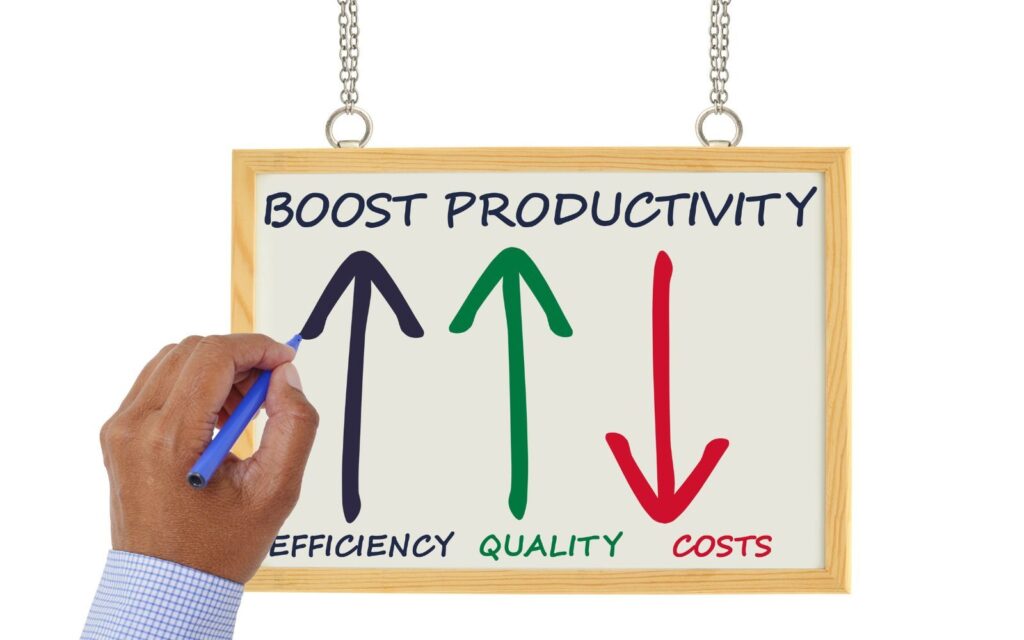Maximize Your Day: The Key Benefits of Time Blocking for Productivity

Ever feel like your to-do list is a seemingly endless list of unfinished tasks? You start the day with a plan, but constantly switching between multiple tasks leaves you overwhelmed. This is where the time blocking method comes in.
Time blocking is a powerful time management technique that helps you take control of your daily schedule by assigning specific tasks to dedicated blocks of time. It reduces context switching, minimizes distractions, and allows you to get more tasks done efficiently.
In this blog post, we’ll explore the benefits of time blocking for productivity, how to implement time blocking, and the best tools to create a time blocked schedule that works for you.
Why Time Blocking Works: Key Benefits
- Boosts Productivity – Helps you focus on one task at a time.
- Minimizes Distractions – Reduces interruptions and keeps you on track.
- Encourages Deep Work – Allows dedicated focus time for demanding tasks.
- Improves Time Awareness – Helps you understand how long tasks actually take.
- Enhances Work-Life Balance – Ensures you allocate time for both work and personal life.
- Reduces Decision Fatigue – Eliminates the need to decide what to do next.
Reduce Context Switching and Stay Focused

Jumping between individual tasks might feel productive, but it actually slows you down. Context switching drains your mental energy, making it harder to complete tasks efficiently.
By using a time blocked calendar, you focus on a single task at a time, reducing the mental strain of switching between similar tasks or unrelated work. This approach aligns perfectly with task prioritization strategies that help you identify what deserves your immediate attention.
Tip: Group similar tasks together to maintain a steady workflow and minimize cognitive overload.
Boost Productivity with Deep Work

Some tasks require intense concentration, like creative work, problem-solving, or writing. Deep work becomes nearly impossible when you’re constantly switching between new tasks.
Time blocking allows you to schedule dedicated focus time for deep work, helping you complete demanding tasks faster and with better quality. For additional support, consider incorporating meditation techniques for stress relief to enhance your mental clarity before tackling demanding projects.
Tip: Block time for deep work in the morning when your energy is highest.
Plan Realistically and Avoid Wasting Time

We often underestimate how long tasks take, leading to overcommitment and frustration. A time blocked schedule forces you to be realistic about your workload, ensuring you don’t try to squeeze in more tasks than possible.
Tip: Use time tracking to analyze how much time you actually spend on daily tasks and adjust accordingly. You might also benefit from learning how to use the Pomodoro technique to better gauge task duration.
Improve Work-Life Balance with a Structured Schedule

Without clear boundaries, work can take over your entire day, leaving little room for personal time. A time blocked calendar helps you set limits, ensuring you schedule free time for relaxation, family, and hobbies.
This structured approach is essential for maintaining emotional wellness in the workplace and preventing burnout. Don’t forget to explore strategies for how to prioritize family time with a busy career to create meaningful connections outside of work.
Tip: Block time for personal activities like a doctor’s appointment, workouts, or social events to create a healthier work-life balance.
Increase Efficiency with Task Batching

Task batching is a smart way to handle administrative tasks, emails, or meetings. Instead of tackling them throughout the day, you dedicate specific blocks of time to process them in one go.
This reduces interruptions and allows you to complete similar tasks more efficiently. When workplace stress starts to build up, implementing how to manage stress at work techniques alongside your batching strategy can significantly improve your overall well-being.
Tip: Schedule back-to-back events for scheduling meetings to keep your workflow uninterrupted.
Gain More Control Over Your Day

A digital calendar like Google Calendar or a project management tool helps you structure your week ahead, preventing last-minute chaos.
When you use a time blocked calendar, you’re in charge of your day instead of reacting to endless requests. This sense of control is crucial for mental wellness in the workplace and helps you maintain emotional stability throughout busy periods.
Tip: Use separate calendars for work and personal life to keep a balanced schedule.
Meet Deadlines and Avoid Procrastination

When tasks don’t have a set time, it’s easy to delay them. By assigning a specific task to a time block, you create accountability and improve decision making on what to work on next.
Building this discipline also supports your overall emotional well-being strategies for success, as completing tasks on schedule reduces anxiety and builds confidence.
Tip: Set deadlines for projects and schedule future blocks in your calendar app to stay on track.
Simplify Your Schedule with a Task Manager

Using a task manager alongside time blocking helps you stay organized. You can categorize tasks by priority, break down long tasks into smaller steps, and ensure you’re making steady progress.
Consider incorporating mindfulness practices for workplace wellness into your planning routine to approach your schedule with greater clarity and intention.
Tip: Combine your to-dos with a time blocked schedule to balance workload and prevent burnout.
Adapt Time Blocking to Your Needs

One of the benefits of time blocking is its flexibility. Whether you prefer smaller tasks in short bursts or longer blocks for specific projects, you can tailor your schedule to fit your work style.
For those working in office environments, how mindfulness boosts workplace productivity can complement your time blocking efforts by helping you stay present and focused during each scheduled block.
Tip: Experiment with different block durations to find what works best for your productivity.
Summary
The benefits of time blocking for productivity go beyond just getting more done—it helps you manage your time effectively, stay focused, and maintain a healthier work-life balance.
Here’s why you should implement time blocking today:
- Reduces context switching and helps you stay focused.
- Encourages deep work for demanding tasks.
- Helps you plan how long tasks take and avoid wasting time.
- Improves decision making and prevents last-minute stress.
- Ensures a time blocked calendar includes both work and free time.
- Works well with Google Calendar, a task manager, or a project management tool.
Start by creating a time blocked schedule and adjusting it as needed. The key is to stay consistent and refine your time management habits over time! Remember that implementing how to reduce stress naturally techniques alongside your time blocking practice will help you maintain long-term productivity without sacrificing your well-being.
Frequently Asked Questions
How Do I Start Time Blocking?
Start by listing your daily tasks, estimating how long tasks take, and assigning specific blocks in a calendar app like Google Calendar.
What If I Have Unpredictable Work?
Leave buffer time between blocks to handle unexpected new tasks or last-minute changes.
Can I Use Time Blocking for Personal Life?
Yes! You can block time for doctor’s appointments, exercise, or fun ways to spend your free time.
What’s the Best Tool for Time Blocking?
A digital calendar like Google Calendar works well, but you can also use a task manager or a project management tool.
How Do I Make Time Blocking a Habit?
Review your time blocked calendar at the start of each week ahead, adjust for priorities, and stick to your plan as much as possible.

